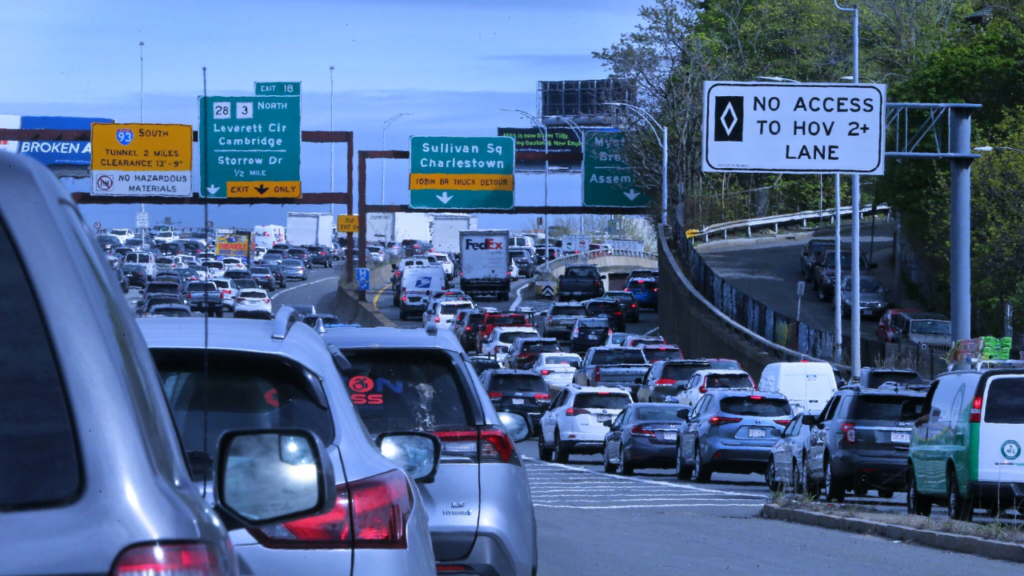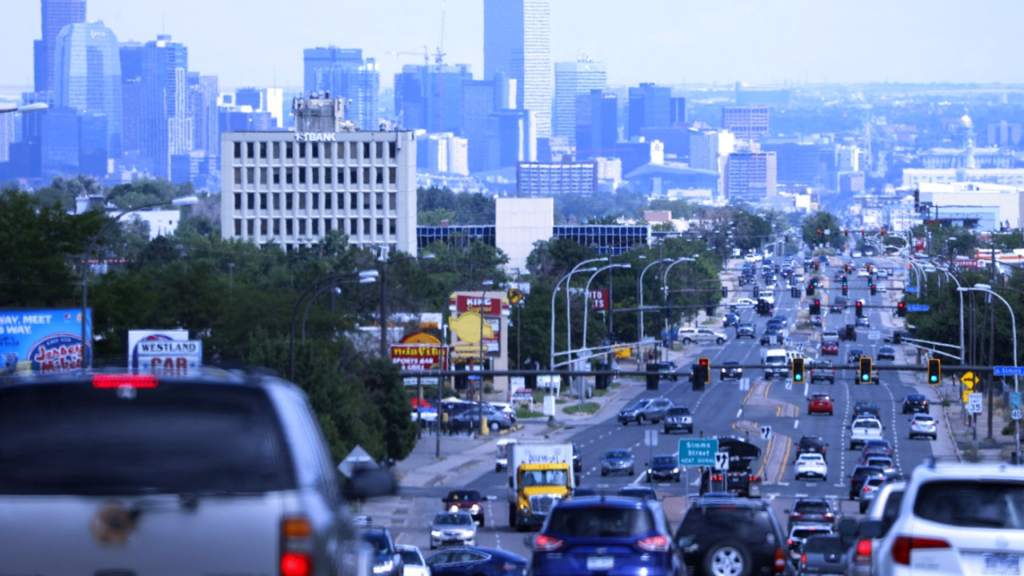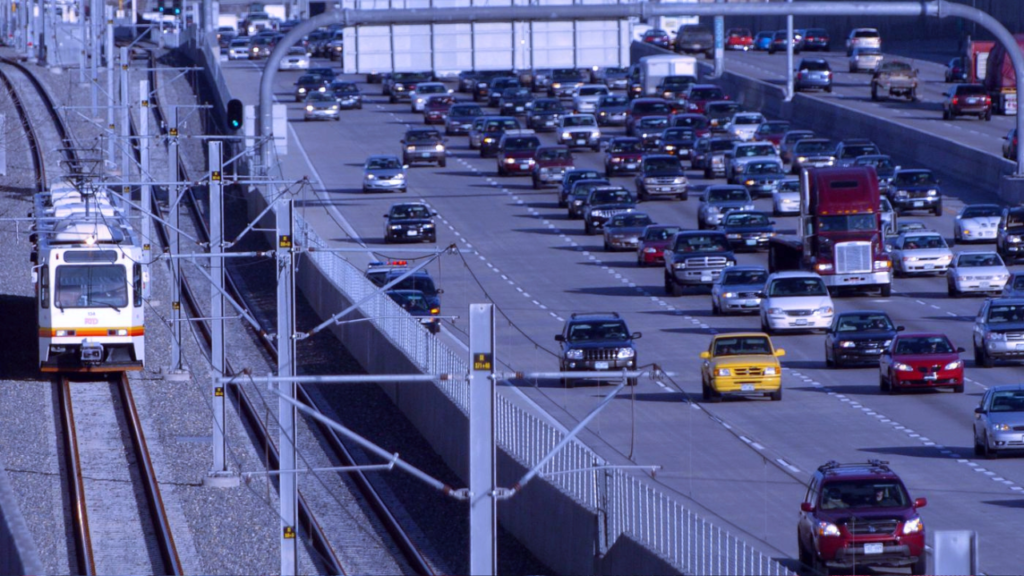Public Transit In The U.S. government has long favored cars over public transportation.
We’re spending far more, hundreds of billions more on road improvement and infrastructure than we are on transit.
New Yorkers are on edge as violent crime throughout the city’s subway system reaches new highs.
I would say, unfortunately, crime has been a deterrent for some people to return.
The number of overall public transit commuters has also dropped significantly since before the pandemic.
How can the US improve public transport?

One alternative, which could be faster than busses but less expensive and complex than the subway system, is autonomous rapid transit or ART. 17 minutes.
That’s how long Americans had to wait on average to get on public transit in 2022. Transit in the U.S. is awful, with few exceptions and a few places it’s infrequent.
It’s not all day. It’s unreliable. Meanwhile, 45% of Americans have no access to public transportation at all.
The real problem in the U.S. is what I would call transit deserts, right? I mean, these are just places where it is just complete and total nightmare to try to get anywhere on transit, whether to work or, you know, to play, to pick up your kids.
You just can’t depend on it. The U.S. spent $79 billion on public transit in 2019, yet most public transit across the nation is finding itself in a fiscal crisis.
In 2021, the U.S. was $176 billion behind in updating the poor conditions of public transit. That backlog is expected to grow to $250 billion by the year 2029.
Ultimately, it’s the riders who are paying for the deficit. The pandemic money is going to run out, and so there will be I think there will be fare increases.
But even more, I think because of the politics of it, there will be service reduction and in many places have predicted that. So just how did public transit in the U.S. get so awful and can it be improved?
Must Read: New York Government NYC subway train of the future by Kathy Hochul
How can we solve public transport problems?

The U.S. government has long favored cars over public transportation.
When we talk about money for transit, we talk about funding. But when we talk about the same public money for roads, we often hear the word investment.
We’re spending far more, hundreds of billions more on road improvement and infrastructure than we are on transit.
For example, U.S. railways combining commuter, heavy and light rail grew by 945 miles between 2010 and 2020.
During the same period, highways were expanded by over 100,000 miles. In transportation, we very often have no choices if we’re talking about local or area transportation, it’s very often only driving.
History plays a big role in this discrepancy. There was a time when the U.S. boasted a public transit system that was the envy of the world.
Prior to 1920s, we had a very good streetcar system in our cities. These were trams that were running typically in the middle of the street.
You would board them at your convenience. They were often so frequent that you didn’t have to plan ahead.
During its peak in the 1920s, Americans living in cities averaged more than 250 streetcar trips per year, but the electric streetcar business was far from profitable. Inflation drove up the operating costs, but businesses were unable to raise fares accordingly, and services quickly began to deteriorate as a result.
When the streetcar companies, which were private, went to the government and so forth and said, please help us, city governments, state governments and of course, the federal government wasn’t involved at all in this period, basically turned a blind eye.
By the end of World War One, a third of transit companies were already in bankruptcy and America had found its newest obsession: cars.
People who wanted to sell more cars reframed the car as an all-purpose transport necessity instead of a special purpose mobility tool.
And when they turned it into that, you know, they really convinced a lot of people that you need this to go everywhere and that you’re not living in a modern, progressive city until it’s a city that lets you drive everywhere.
And with the influx of money and aid from policies, cities began to quickly transform around cars.
They forced private transit companies, whenever possible, to strip out the streetcar lines. They created all these one way streets to speed up automobiles.
How do you use Public Transit in the US?

They built parkways, they built highways. And when people said, wait a minute, is this really the right way to do it? The answer was, oh, it’s just supply and demand.
It’s a free market. Drivers are voting with their gas pedals, and we need to build the roads and streets for the people who are paying for them.
There is a kind of a time lag between public investment in highway infrastructure versus transit infrastructure in our nation.
There was at least 40 to 50 years of lag, and the federal government did not get into public transportation funding programs until late 1960s.
Today, that disparity is more evident through Partizan differences.
The ratio in which funding is distributed between highways and public transit became the main point of contention over the 2021 infrastructure bill.
Democrats wanted just 20% of the budget to go towards mass transit, while Republicans pushed for less.
Democrats eventually compromised to pass the bill through the Senate. We have identified the automobile with personal individual liberty.
We also associate driving, particularly with suburban and rural America, while public transit we associate with urban America.
Is public transport popular in USA?

Those correlations then bleed into political correlations of similar kinds, where fostering more driving tends to be something that’s favored in more conservative, more Republican, more rural areas.
A study from 2021 revealed that 77% of liberal respondents believe that transport policy should shift more trips towards public transit, walking and bicycling.
While 53% of conservatives believe that transport policy should make it easier for most people to drive.
The discrepancy was even higher with very liberal or conservative respondents. It’s very hard politically to get that kind of momentum.
Cities are a little bit easier, but states very hard to get that suburban voter who is very powerful in almost every state legislature, very hard to get federal officials behind this because, again, the payoff politically, because it’s a relatively small number of users, very small.
It can be 1%, 2%, 3% in most cities. That’s not the loud voices.
The loud voices are going to be the drivers. Funding is one of the main reasons behind the poor state of public transit in the U.S.
What part of the US has the best public transportation?

Right now, the federal money that goes to transit services is largely limited to the capital costs.
That means, you know, building the infrastructure or buying the vehicles. But the operating costs are where the transit services are really pinched.
Public transit relies heavily on subsidies because it’s still far from a profitable business. Take the MTA, the nation’s largest public transit, for example.
In 2022, less than a quarter of the MTA’s revenue came from rider fares. By comparison, revenue from dedicated taxes and subsidies from local governments made up 40% of its total revenue.
The cost of living, the cost of operations, the cost of construction, all of that over the last 40, 50 years has far exceeded what is collected in fares.
Current subsidies simply aren’t enough to cover the costs. The MTA’s finances were hit hard by the pandemic, resulting in temporary aid from the federal government, yet it still reported a budget deficit of $1.9 billion in 2022.
This problem extends beyond New York City. Philadelphia’s Septa predicts it will see a deficit of almost $269 million by 2027.
How is Los Angeles public transportation?
Chicago’s RTA predicts a budget gap of $730 million by 2026, while LA Metro’s budget gap expects to reach $1 billion by the end of 2026.
These financial deficits lead directly to deteriorating services. If a transit system doesn’t have enough money, we can limit the hours of service.
We can limit the frequency of service, we can limit the extent of the network. But all of those things also deter ridership and encourage people to depend on their car.
In a 2022 survey on incentives around public transit, Americans chose accurate and reliable arrival times as the second biggest reason that would encourage them to use public transit more often, right behind lower fares.
Public transportation is so expensive to run in the United States is because of the lack of usage. Mass transit need mass to be successful.
Ridership has continuously declined since 2015, and after seeing a steep drop during the pandemic, ridership has failed to recover to its previous levels. It’s a vicious cycle, right?
What is public transport called in America?

If we have less users, less riders, it’s difficult to justify significant public investment in that system, and therefore it’s become more difficult to provide quality service.
And because you have a lack of quality of service, you will continue to have a lack of users and riders. If the riders are either insufficient in number or, and or do not provide a fare right that covers those costs, you have to make up that money in public subsidies.
And in the United States, the structure of funding for public transit is insufficient to basically really make up for that missing enormous chunk of money to fund operations and capital.
But a thriving public transit system is beneficial for all Americans. The American Public Transportation Association estimates that 87% of trips on transit directly benefit the local economy, with nearly $42 billion in transit spending going directly to the private sector.
A dollar invested in public transit is believed to generate $5 in economic returns. I mean, look what happened with Amazon. Where did Amazon locate new headquarters, right?
